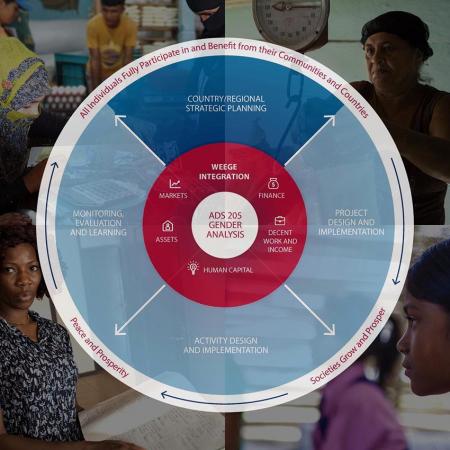3.1. Overview
Strategic planning is an essential part of the United States Agency for International Development’s (USAID) program cycle, culminating in a country development cooperation strategy (CDCS) or a regional development cooperation strategy (RDCS).For the sake of brevity, Unit 3 refers primarily to CDCSs, though the guidance provided herein is applicable to the RDCS creation process as well.
These strategies define a country or region’s goals and objectives, based on the needs, constraints and opportunities USAID identifies through stakeholder consultations and analyses. Although it does not detail the projects or activities required to achieve those goals and objectives, the CDCS lays the foundation for project and activity design. Integrating women’s economic empowerment and gender equality (WEEGE) into the CDCS offers a distinct opportunity to make progress on WEEGE, from strategy to implementation (refer to Figure 1). Intentionally applying a WEEGE lens to the CDCS—through consultations and analysis—can offer useful entry points to further WEEGE and to create lasting change.
Figure 1. Integrating WEEGE into USAID’s Program Cycle
Image

Key Messages
|
This unit will address how to:
- include WEEGE considerations into analyses, including the required gender analysis.In accordance with ADS 205, USAID shall ensure that strategies, projects and activities of the Agency are shaped by a gender analysis.
- integrate WEEGE into CDCS consultations and parameter setting.
- incorporate gender analysis findings, including those related to WEEGE, into the CDCS development hypothesis, results framework and, as relevant, throughout the final CDCS document.

